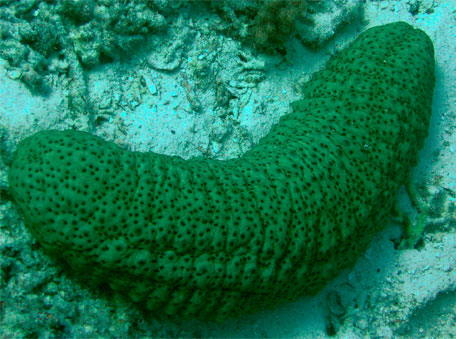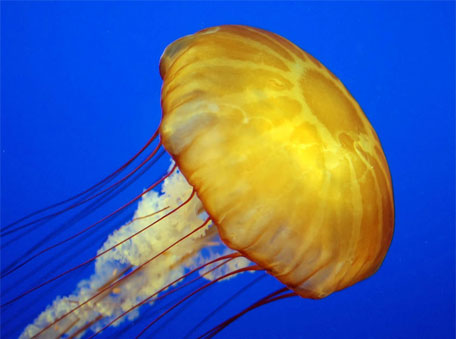The ocean is a treasure trove of many living and non-living resources. Ancient Indian documents show that numerous marine organisms-based remedies and preventives were from the sea. The Greeks and Arabs also contributed substantially to the assimilation, codification, and development of these medicines. People in those days, however, realised that undiscovered wealth dwelled in the waters of the ocean throughout the world. As such, marine organisms began contributing useful new therapeutic agents as seen in traditional medicinal practices all over the world. Even today, approximately 80 percent of the world’s population relies on traditional plant-based medicines for primary health care.
In Ayurvedic practices, the use of marine organisms has been known for centuries. The origin of Ayurveda is believed to be from ‘Samudra Manthan’ (churning of the sea) in which the Amrut – nectar of life – was produced. In Ayurvedic practices, marine organisms are grouped in three main categories: animal, plant and minerals. Corals, pearls, shells, conch, sea salt, sea coconut, etc., are the main sea organisms used for the preparation of different kinds of drugs in Ayurveda.
The following are some of the important and potential marine organisms useful in drug industries:
Seaweeds
In Chinese traditional medicinal practices, Kelp (Laminaria) and Sargassum – both brown alga, and red alga, are commonly used to prevent joint pain from inflammation. These seaweeds are proven to be wonderful in solving many bone related problems, and at the same time help in normalising thyroid and reproductive functions. Seaweed has been reported to draw a wealth of mineral elements from the sea that can account for upto 36 percent of its dry mass. The mineral macronutrients in seaweed consist of sodium, calcium, magnesium, potassium, chlorine, sulphur and phosphorus, whereas the micronutrients include iodine, iron, zinc, copper, selenium, molybdenum, fluoride, manganese, boron, nickel and cobalt.
Seaweed contains a large portion of iodine compared to the dietary minimum requirements. Brown algae showed the highest iodine content ranging from 1500-8000 ppm. Daily requirements of iodine for adults are currently recommended at150 µg/day, and as such only a small amount of seaweed is required to meet its demand. One gramme of dried brown algae provides 500-8,000 µg of iodine. Studies show that the human body adapts readily to higher iodine intake. The thyroid gland is the main tissue in the human body which needs iodine.
It has been reported that a large number of people all over the world do not get sufficient iodine because the land, plants, and animals that serve as common dietary sources contain low amounts of this compound. Seaweed is also one of the richest plant sources of calcium (4-7% of dry matter). One gram of dried seaweed provides 70 mg of calcium as compared to the daily dietary requirement of about 1,000 mg. So, the calcium requirement from seaweed is still higher than a serving of most non-milk based foods.
Spirulina, a micro-alga, is well known for its very high protein content ranging up to 70 percent of dry matter. Seaweed has also been reported to contain several important vitamins. Red and brown algae are rich in carotenes (provitamin A) and are used as a source of natural mixed carotenes for dietary supplements. Vitamin C in red and brown algae has been found ranging from 500-3000 ppm. Vitamin B12 which is not found in most terrestrial plants, is present in seaweed.
Seaweeds have been reported to be used for treating soft swellings, including ovarian cysts, breast lumps, lymph node swellings, lipomas, and fat accumulation from simple obesity.
Mangrove plants
Mangrove plants have been used for medicinal purposes over the past few years. In some cases, the plant or its sap is used directly, while in other cases, the leaves may be heated or the plant material burned to an ash for various applications such as skin sores and scabies, leprosy sores, body pain, boils, washing wounds, headaches, splints for fingers, toothache, ulcers, and yaws. Mangroves are flowering plants, and their flowers are a likely source for honey. Native bees are usually found in the mangroves during the various flowering seasons, and these plants are now exploited by commercial apiarists with their exotic bees.
Sea cucumber
In ancient times, sea cucumber was used as an important ingredient in Chinese dishes. It is often known in medical literature as fangcishen. The Asian demand for sea cucumber has been so high that it now has to be collected from the US, Australia, and Philippines to meet the increasing demand. Although the Atlantic sea cucumber was collected primarily as food, it has recently been discovered to be an important source of medicinal component. Sea cucumber also has low fat content as compared to other food from the sea.

In traditional Chinese medicine, the sea cucumber has been reportedly used for treating disorders of the kidney system. Sea cucumber is now considered a valuable source for several kinds of important compounds that may be used as natural health products, and perhaps also be developed as drugs. The extracts prepared from sea cucumber could be put into easy-to-consume formats, such as capsules and tablets as most people do not have access to its beneficial components. Russian, Japanese, and Chinese studies have shown that sea cucumbers also contain saponins (triterpene glycosides) which have a structure similar to the active constituents of ginseng, ganoderma and other famous tonic herbs.
Jellyfish
Jellyfish has been exploited commercially and considered an important food in China for over a thousand years. Semi-dried jellyfish represents a multimillion dollar business in Asia. Cannon ball jellyfish collagen has shown to have a suppressing effect on antigen induced arthritis in laboratory rats. Mucin, a protein substance, is also extracted from jellyfish and is used in drug delivery, cosmetic products, and food additives. With the great abundance of cannonball jellyfish in US coastal waters, turning it into value added products could have tremendous environmental and economic benefits.
Marine molluscs
There are many natural remedies for acute or chronic pain due to simple arthritis or rheumatism. These products are of marine origin, and have been proven to give effective relief without the unwanted side effects of the use of steroid treatment that is so common today. One such useful product for hip or joint pain is an extract prepared from green mussel, a marine bivalve, belonging to the molluscs group. Green mussel has been used to treat degenerative joint disease for many years. This mollusc contains many bioactive compounds including glycosaminoglycans, which is an anti-inflammatory compound. Green mussel has been shown to reduce the inflammation of rheumatoid arthritis and degenerative joint disease of the stifle. As early as the second century, the Romans have reported oysters and clams to be good aphrodisiac agents.
Seahorse
The seahorse is a highly regarded and acclaimed marine animal in Chinese philosophy. In Asia, many people have been using seahorses for thousands of years as a cure for a variety of ailments. Chinese medicine manuals refer to it as being sweet in taste, warm in nature. Their active compounds are reported to enter the kidney and liver channels quickly. The therapeutic value of seahorses has been spread via folklore from generation to generation. In China, about 20 million seahorses are caught each year from the wild and have been used as an ingredient in traditional medicine over the past 600 years. Seahorses are reported to play an important role in balancing vital energy flows within the body, cure impotence and infertility, asthma, high cholesterol, goitre, kidney disorders and skin disease such as acne and persistent nodules formation.

Horseshoe crab
The horseshoe crab has been useful to humans today in many ways. A tribe inhabiting the north-east coast of Odisha, uses the tail piece of the horseshoe crab to get relief from different types of ailments by tying it on the arms or pricking it on the forehead. It has been reported that the tail tips are used for healing arthritis or other joint pains and such that they are sold by faith healers in West Bengal. The dead carapace of the horseshoe crab is often boiled with mustard oil and is used for treating rheumatic pain in many Asian countries.
Sea turtles
The eggs of sea turtles are prized as food, and used in traditional medicine in Asia and most parts of the tropical world. Latin Americans also use sea turtle eggs as an aphrodisiac and energising protein. In some parts of the world, nearly 100 percent of the eggs are harvested by humans immediately after they are laid.
Sperm whale
An important compound which is known as Ambergris is produced by sperm whales. Ambergris is a black, semi viscous liquid that forms around indigestible squid beaks. On exposure to sunlight and air, Ambergris quickly oxidises and hardens to a pleasantly aromatic, marbled, greyish, and waxy substance in which the squid beaks are embedded. When ambergris is heated, it produces a very pleasant, mild, sweet, and earthy aroma. From ancient times it has been used in the West as a fixative for rare perfumes, since it has the effect of making other perfumes last much longer than they would. It is said that a single drop of ambergris applied to paper and placed in a book will remain fragrant after 40 years and that once handled, the fingers will carry its scent for several days even when washed. To the Arabs it is known as ‘ambar’ and originally called ‘amber’ in the West. In addition to its common usage as expensive perfumery, it has been used in the flavouring of dried fruit and tobacco. In India, ambergris is collected from the Andaman waters, and is exported at a very high cost for various applications.
These above mentioned evidences strongly prove that marine animals have the potential for directly benefiting human beings through holistic care. This is especially true in chronic cases, where often, traditional medicine is found to be effective after modern medicine has failed.


 [/column]
[/column] [/column]
[/column]